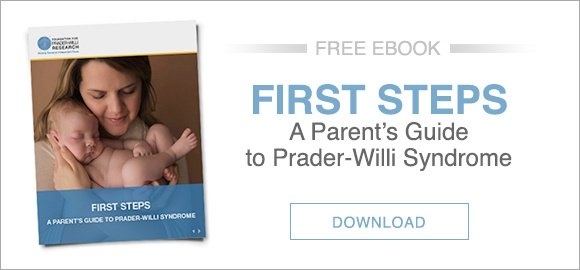There's a new paper out in a top journal, Science, on what is may be the first understanding of the underlying molecular basis of features of PWS - The snoRNA HBII-52 regulates alternative splicing of the serotonin receptor 2C -- I've put the link at the end of the message. Here's the lowdown:
Remember that genes are made of DNA, DNA acts as the template to make the RNA, and RNA makes the protein. Proteins (along with other stuff) are what's in your cells and do the major work of the cells. If we look at chromosome 15 in the PWS region, there are some genes (like necdin, MAGE, etc) that are inactivated in PWS, but there are genetic reasons (which I won't go into here) to think that these don't account for the all problems in PWS (their loss may contribute to the problems in PWS, but are not necessarily the major cause). In the middle of the PWS region on chromosome 15 are these other DNA sequences that make funky little RNAs called 'snoRNAs'. These snoRNAs are unusual because they don't code for proteins. It has been thought that they might act to regulate other RNAs (not necessarily coded for by chromosome 15), but nobody could figure out if that was so, and further, what RNAs they were regulating.
Now, Dr. Stamm in Germany (whose background is in control of RNA splicing) has figured out at least one target for the snoRNAs in the PWS region - the serotonin receptor 2C (the gene for this protein is actually on the X chromosome). In the normal situation, the HBII-52 sno RNA acts on the RNA that codes for the serotonin 2C receptor and helps it make a particular form of the receptor that's very responsive to serotonin. Dr. Stamm did several studies in cells to show that HBII-52 sno RNA interacted with and altered splicing of the RNA encoding the serotonin 2C receptor. In PWS samples, with the HBII-52 sno missing, he showed this very active form of the serotonin receptor 2C is not efficiently made. This might have several consequences, including a lack of responsiveness to serotonin. From a scientific standpoint, this paper is important because it is the first example of a snoRNA being shown to regulate this particular process and the first time a snoRNA has been directly implicated in a genetic disease. Note that the loss of other snoRNAs in the region (e.g, HBII-85) may also play a critical role in mediating the PWS features; this work represents a good starting place to investigate how all the PWS-region snoRNAs work.
So, what does this mean for our kids?? I think of it as we've finally made it to the starting line. Up until now, there has not been a clear consensus on what's wrong in PWS - now we are (finally!) beginning to understand. It seems probable that the snoRNAs in the PWS region may also regulate other genes, and loss of these snoRNAs may play a critical role in determining the PWS characteristics. Look for this to be a very hot area of research in the upcoming year or two. Understanding what gets misregulated when those snoRNAs are missing may give us one or several targets for drug development (or application of existing drugs - as in the case of the serotonin receptor, which is consistent with a beneficial effect of serotonin reuptake inhibitors in PWS). Also, down the line a bit, look for strategies to replace the missing snoRNA or use drugs or other interventions to compensate for the fact that they are missing. As always, there are no guarantees that this finding will lead quickly to an effective therapy, but this is a huge step in understanding what's going on in PWS, letting us and begin to think of ways to make things better. It's a huge step in the quest to help our kids.
The snoRNA HBII-52 regulates alternative splicing of the serotonin receptor 2C. Kishore S, Stamm S Science 311: 230 (January 13, 2006)








